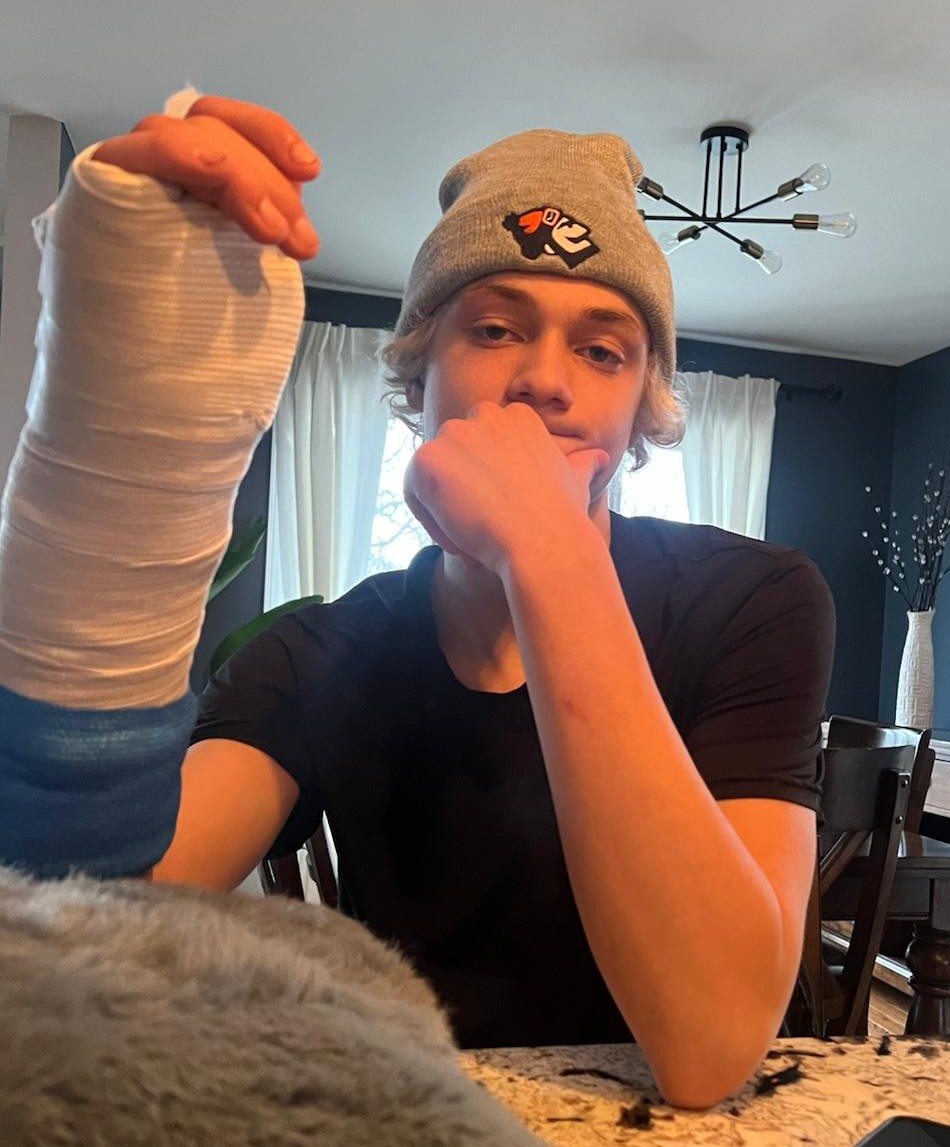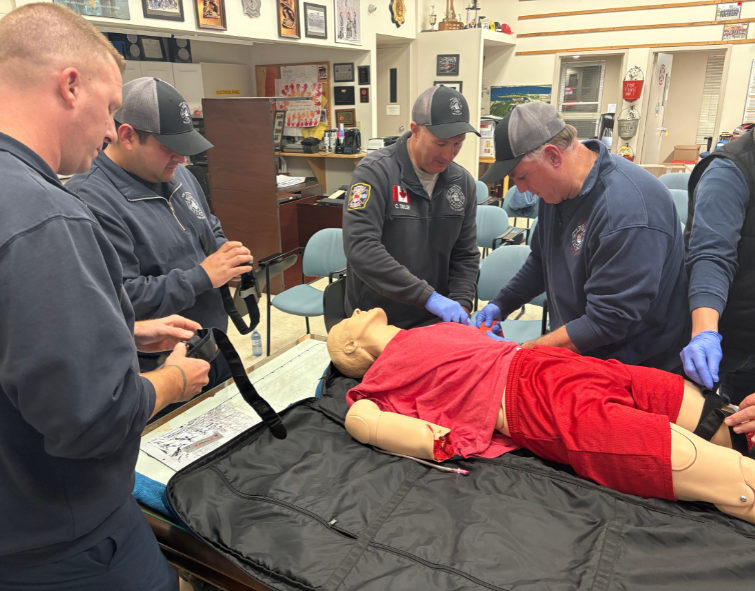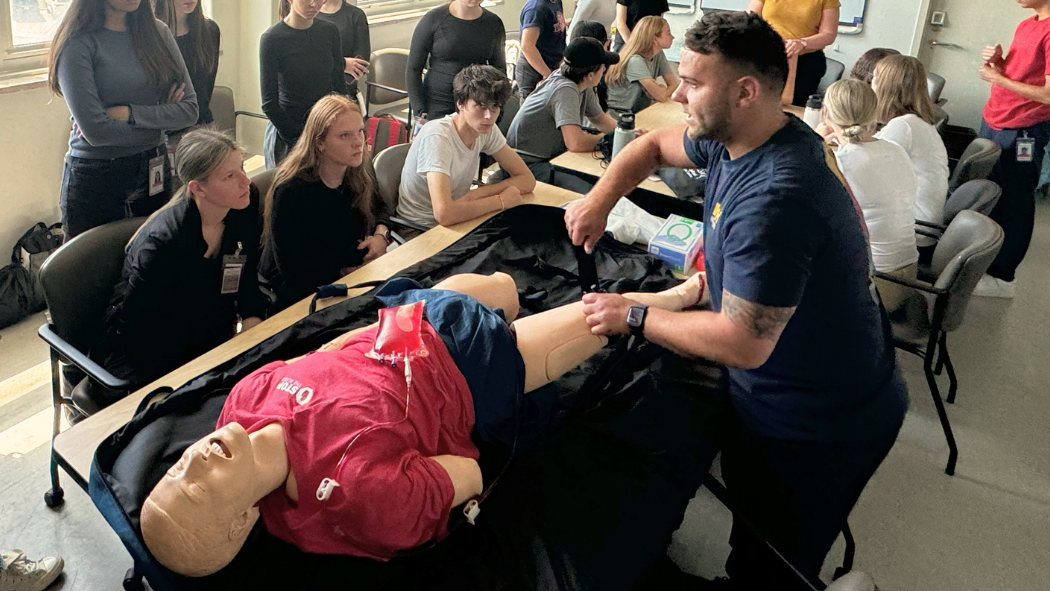
Pictured: Tyler Thorpe playing hockey
November 6, 2025
Trigger warning: This story involves discussions of severe bleeding and contains images some might find graphic.
It was a late winter day in March 2024. The Elgin Middlesex Canucks U15 hockey team was down by one goal, the goalie had been pulled, and there were just seconds left on the clock. As the puck dropped and both teams raced for possession, Jennifer Thorpe watched her 14-year-old son Tyler skate towards the bench.
She instinctively knew that something was wrong.
After making her way to the dressing room, she discovered several team members and coaches surrounding Tyler, their faces pale and full of concern. Tyler sat on the bench holding a blood-soaked towel to his wrist.
Moments earlier, Tyler had skated past a fallen player. Their lifted skate struck his wrist, cutting an artery and a tendon, and damaging a nerve. The bleed was life threatening.
Fortunately, a trainer on the opposing team — Dr. James Menlove, an Emergency Medicine Physician at St. Thomas Elgin General Hospital — recognized the severity of the injury and stepped into action, properly controlling the bleed until Tyler could be transported to the hospital for further care.

Tyler has since undergone two surgeries at Children’s Hospital at London Health Sciences Centre’s (LHSC) to repair the injuries and is recovering well. Although he missed the playoffs, he still showed up on the sidelines in his suit and bleached hair to cheer his team on.
As a mother, this terrifying moment became a turning point for Thorpe. She now advocates for more widespread bleeding control training, as well as encouraging the use of neck and wrist guards during games for additional protection. “The look on the coach’s faces was pure fear. What if the doctor hadn’t been there?”

Every minute matters
Life-threatening bleeding can happen anywhere and if left untreated, can be fatal within four to five minutes. This is why most people can and should be trained to control a life-threatening bleed at the scene of an accident while waiting for paramedics to arrive.
Dr. Kelly Vogt, LHSC’s trauma medical director, knows the importance of controlling life-threatening bleeding first-hand and sees such cases arrive in the Emergency Department every week. While most causes are from car crashes, there are also increasing instances of bleeding from farm and industrial injuries, as well as from e-bikes and e-scooters.
“One of the most common causes of death after a major trauma is bleeding,” Vogt says. “Rapid control of bleeding can take a situation where someone is almost certain to die and change it to one where they have a very good chance to survive.”
Register for Stop the Bleed
The Stop the Bleed program is a collaborative effort led by the American College of Surgeons Committee on Trauma that teaches the public how to control life-threatening bleeding. LHSC’s Trauma Program offers this training to businesses and organizations in hopes of providing this life-saving education within the community, which includes hands-on practice to control life-threatening bleeding through tourniquet application, direct pressure, and wound packing.

Since Tyler’s injury, his hockey team’s coaches and trainers have participated in the Stop the Bleed program. However, there’s hope that more local teams will also take part in this training.
“Hockey teams are a key group we’d love to train more of as hockey carries a higher risk of life-threatening bleeds due skate blades coming in contact with vulnerable areas of the body,” says Rai Di Loreto, Injury Prevention Specialist, Trauma Program at LHSC. “This training equips coaches, trainers, and even parents with the skills to stop life threatening bleeding until emergency help arrives.
Groups, businesses or organizations interested in taking part in Stop the Bleed can visit our website for booking details and more information.

